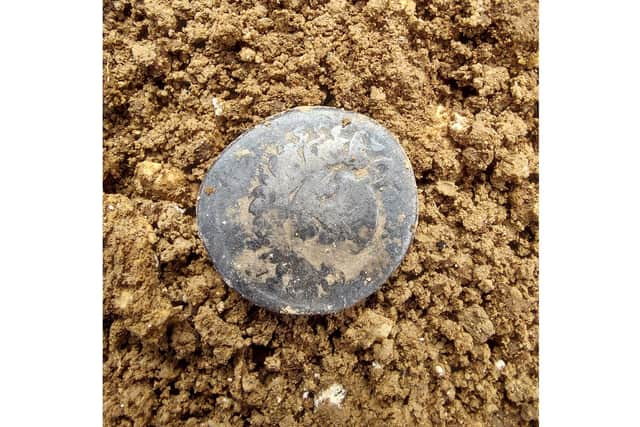Roman coin and grave discovered by archeological dig along pipeline route for Havant Thicket reservoir
and live on Freeview channel 276
Wessex Archaeology, working with Southern Water, discovered a Roman grave and coin.
Southern Water’s £900 million ‘Water for Life Hampshire’ programme will see the first reservoir built in England for 25 years at Havant Thicket.
Advertisement
Hide AdAdvertisement
Hide AdAs part of the programme, new pipelines are being planned across the county to increase connections between every corner of the region and especially between key water supply works at Testwood, Otterbourne and River Way, near Andover.


Before any pipes can be laid the company must satisfy regulators including Natural England, Environment Agency, Historic England and Local Planning Authorities that plans will not damage the environment or destroy historical remains.
Dr Nicola Meakins, who leads Southern Water’s enabling team, said: “We build big projects across the region and are spending £3bn between 2020 and 2025 on improving our assets. But before the key can be turned on a digger, my team of ecologists and surveyors have to carry out numerous assessments. Whether it’s the discovery of rare hazel dormouse habitat, badger setts or as in this case archaeological remains, a plan must be put in place to prevent or mitigate damage.
“Roman graves are not uncommon – when the Romans built roads legionnaires who died were simply buried by the side of the road. Wessex Archology learns something new every time one is found however. In this case the discovery of a 2,000-year-old coin helps us to understand what was happening in the area back then.”